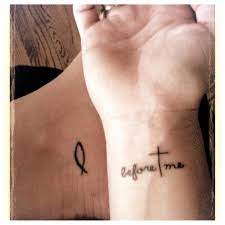
In the mid-19th century, Japan faced external colonization threats, leading to a focus on eliminating “barbaric practices” and becoming more civilized. Tattooing became illegal for citizens, but the practice remained alive within Yakuza membership. The Yakuza used tattoos to symbolize membership and social exclusion. The yakuza members viewed tattoos that told evil as a way of fighting against society. Additionally, the Yakuza’s beliefs and values were inspired by the courage and honor of samurai warriors, despite the historical rivalry between the two groups.
Punishment
In Japan, tattoos have long been associated with criminals. Dating as far back as 720 A.D., serious criminals were marked on their foreheads to showcase the severity of their crimes to the public. Tattoos became increasingly used to keep criminals under arrest. Different symbols or markings were used depending on the nature and severity of the crimes committed.
Decorative
Traditional Japanese tattooing still carries an unfortunate association with crime and the Yakuza, particularly among older individuals and businesspeople who view it as a sign of criminality. Many Yakuza members also avoid getting tattoos to prevent easy identification in workplace environments. Traditional Japanese tattooing requires extensive skill and practice, and aspiring artists must spend years observing and mastering the craft.
Yakuza
tattoos are strongly associated with criminal gangs in Japan, particularly the Yakuza. The Yakuza engages in extortion, racketeering, protection schemes, gambling, and violence for hire.

